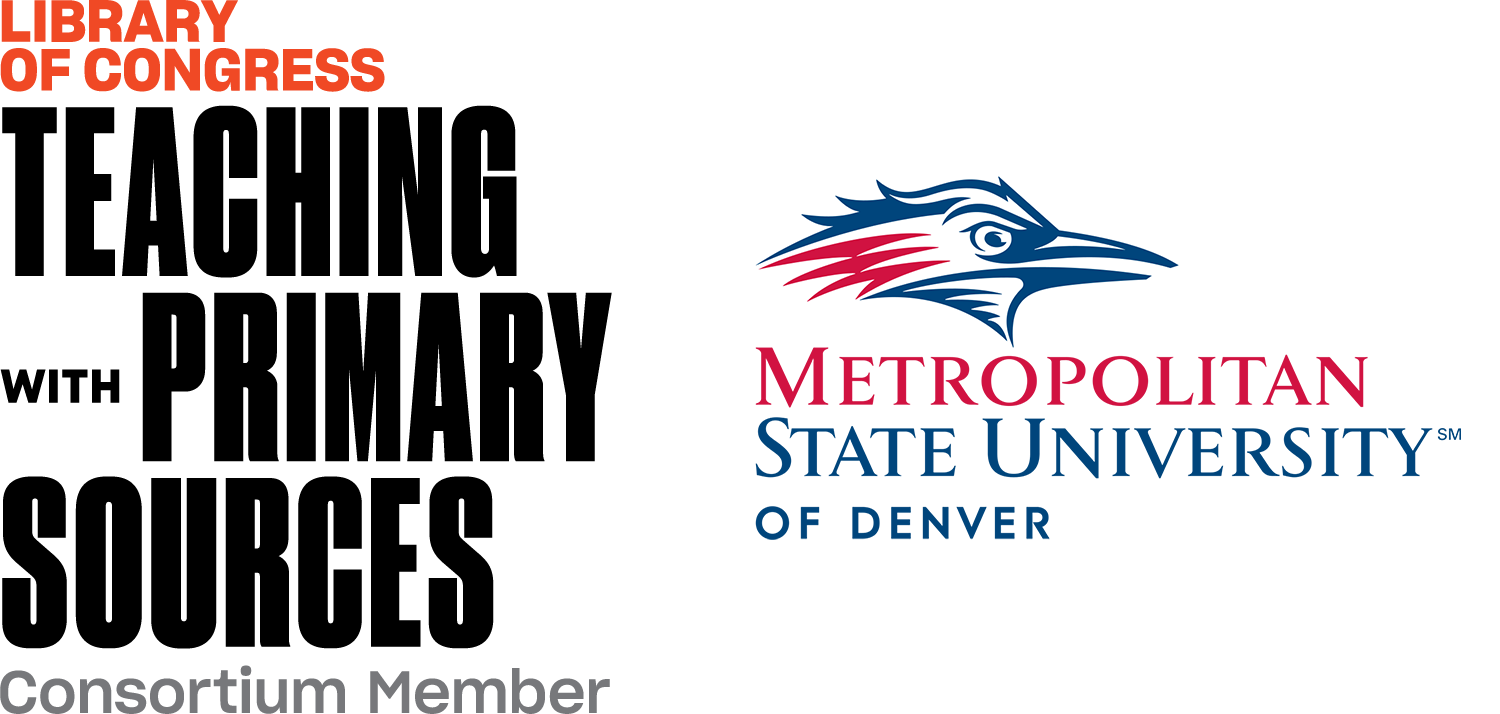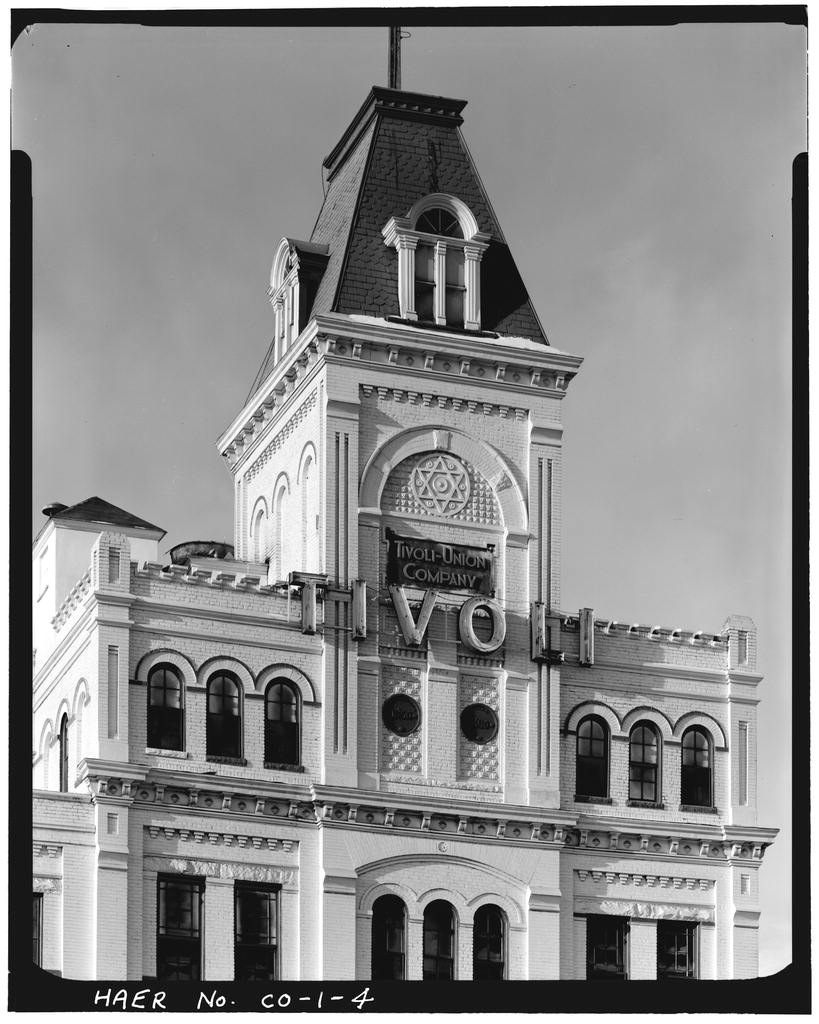Teaching social studies is about learning critical thinking and analysis skills, understanding and utilizing evidence, identifying perspective and bias, and becoming an engaged citizen and active listener. Content is ubiquitous and students can access historical content anywhere with an internet connection from their smartphone or computer. Historical thinking skills are not just for historians, but vital for being successful in the 21st century. The TPS Western Region 2017 Summer Institute sought to help educators integrate primary sources and strategies into their lesson plans to do just that.
On June 22nd and 23rd, 2017 the Library of Congress Teaching with Primary Sources Western Region at MSU Denver hosted the 2017 Summer Institute for 40 educators from Colorado, Montana, California, and Alaska, at the Tivoli Station on the Auraria Campus.
Below is a short synopsis for each of the master teachers’ discussions who led the Summer Institute, as well as links to the presentations so that you can utilize these resources on in your own classrooms.
The entire day’s resources and presentations can be accessed on the TPS Western Region Summer Institute Wiki.
Day 1
Introduction to the Library of Congress and Primary Source Analysis
To first be acclimated with the Library of Congress and the purpose for teaching primary sources, the TPS Team led a discussion about the social studies and historical thinking, then provided two foundational primary source analysis activities, Mystery Photo and Zoom-In.
View presentation and resources here.
Right Questions Institute – Question Formulation Technique
 Cindy Stout, Historian and Social Studies Content Specialist, who also works with Colorado Humanities creating the Colorado Encyclopedia, led an inquiry activity from the Right Question Institute using School Begins. To help students formulate good focus questions, understand the difference between open and closed questions, and to reflect on their findings, participants collaborated to create a plethora of questions to help them better analyze and understand the primary source.
Cindy Stout, Historian and Social Studies Content Specialist, who also works with Colorado Humanities creating the Colorado Encyclopedia, led an inquiry activity from the Right Question Institute using School Begins. To help students formulate good focus questions, understand the difference between open and closed questions, and to reflect on their findings, participants collaborated to create a plethora of questions to help them better analyze and understand the primary source.
Download the RQI – QFT worksheet here, and the Questioning Protocol here.
Connecting Maps and Historical Context for All Grade and Skill Levels – Using Maps in the Classroom
 Sherrie Galloway, former Library of Congress Teacher in Residence, School Media Library Specialist, and Historic Map Guru, led an activity using a variety of historical maps. Each map was cut into four to eight parts, and each group was given a different map to analyze using the Library of Congress Primary Source Analysis Tool. Participants first analyzed their piece of the map before putting it together and analyzing it as a whole, though some of the map pieces were left out to further the curiosity and inquiry.
Sherrie Galloway, former Library of Congress Teacher in Residence, School Media Library Specialist, and Historic Map Guru, led an activity using a variety of historical maps. Each map was cut into four to eight parts, and each group was given a different map to analyze using the Library of Congress Primary Source Analysis Tool. Participants first analyzed their piece of the map before putting it together and analyzing it as a whole, though some of the map pieces were left out to further the curiosity and inquiry.
Sherrie asked them to write down what they think the purpose of their map was throughout the activity, and at the end they were asked again how their thinking about the purpose of the map changed as they learned more information from the other map pieces. Then, they had to create a headline for the map that captures the most important aspect that should be remembered.
Download the presentation here, and view a sample Waldseemüller’s Map: World 1507 map activity here.
Using Art as a Primary Source
 Kristin Fong, Museum Educator at the American Museum of Western Art: The Anshutz Collection, led a discussion on how art can be an effective primary source to improve critical thinking and analysis skills.
Kristin Fong, Museum Educator at the American Museum of Western Art: The Anshutz Collection, led a discussion on how art can be an effective primary source to improve critical thinking and analysis skills.
Download her presentation here.
Day 2
Flip-Pic Morning Activity – Get the Thought Ball Rolling
Five primary source documents were handed out and participants were asked to come up with strategies to use in their classroom with that specific primary source. The sources were passed around to each person and the ideas for classroom application kept flowing. Each activity idea was written down on the back of the primary source, and logged in the Google Doc here.
Literacy CORE 5: Speaking, Writing, Reading, Listening, Viewing
 Rolly Schendel, Assistant Professor of Literacy, Elementary Teacher, and Expert in Differentiated Learning, led an interactive session on meeting literacy standards using primary sources. Thirteen different primary source based literacy activities were modeled, and then each group was given a stack of children’s books. Using these children’s books, participants were asked to find primary sources at the Library of Congress that could be taught alongside the picture books. A collaborative Google Doc was created with some amazing ideas for integrating primary sources in the K-5 classroom. This innovative activity was a huge success.
Rolly Schendel, Assistant Professor of Literacy, Elementary Teacher, and Expert in Differentiated Learning, led an interactive session on meeting literacy standards using primary sources. Thirteen different primary source based literacy activities were modeled, and then each group was given a stack of children’s books. Using these children’s books, participants were asked to find primary sources at the Library of Congress that could be taught alongside the picture books. A collaborative Google Doc was created with some amazing ideas for integrating primary sources in the K-5 classroom. This innovative activity was a huge success.
View all of these resources on Day 2 of the Wiki.
Speed Dating with Strategies and Tech Tools – Learning Activity Development
 Michelle Pearson, Historic Preservationist, 2011 Teacher of the Year, Self-Proclaimed Geek, and Education Technologist, presented a scattershot of 25+ strategies that can be used with primary sources. At least one of these classroom strategies will inspire anyone to integrate primary sources into a lesson plan to enrich instruction and engage learners of all ages.
Michelle Pearson, Historic Preservationist, 2011 Teacher of the Year, Self-Proclaimed Geek, and Education Technologist, presented a scattershot of 25+ strategies that can be used with primary sources. At least one of these classroom strategies will inspire anyone to integrate primary sources into a lesson plan to enrich instruction and engage learners of all ages.
Each strategy was modeled in this fast-paced presentation and made for a positive experience for all participants.
View her presentation here to absorb each strategy fully, and all of the activities and resources on Day 2 of the Wiki.
Work Time! Never Enough Time to Work…
One of the comments that we consistently hear from educators is that they never have enough time to find primary sources and create engaging lesson plans. So, in order to fulfill this goal, we allowed participants a couple of hours each day to do this, as well as learn and collaborate from their cohorts and group members. At the end of the day some were able to share with the whole group what they were able to create in their short time at this two-day workshop, and we were all pleasantly surprised with the ideas they came up with.
Testimonials
“This was SOOOOO incredibly valuable. I have my first week of school planned and that is the best feeling! I feel confident that I can seamlessly incorporate some of the strategies discussed in my classroom!”
“I feel like I learned as much as I can for now! I’m on overload. :)”
“The workshop design was brilliant! The pace was perfect! Good transitions! Student VOICE in the room! Choices! Changing group size! Beautiful, comfortable, learning space! Informed experience leaders and coaches! Great materials! Actually writing on primary source facsimiles! So great! Great questioning! Great wait time! Lots of opportunities for many people to participate! Great lessons informed by needs. Images were captivating! Strategies so clever and effective!”
“I didn’t want it to be over. I have never said that about any other workshop I have ever attended in my 23 years of teaching.”
All in all, this workshop was a huge success and we hope to offer another Summer Institute in 2018. Thank you to all of the participants for coming and allowing us to not only share our knowledge with you, but also learn from all of your experiences in the classroom.
If you have any comments or questions, feel free to email us through the About Page, and please check out all of the resources on the TPS Western Region Summer Institute Wiki.





